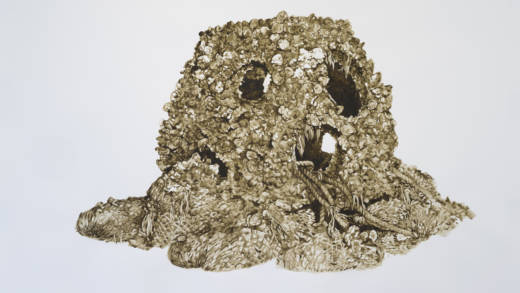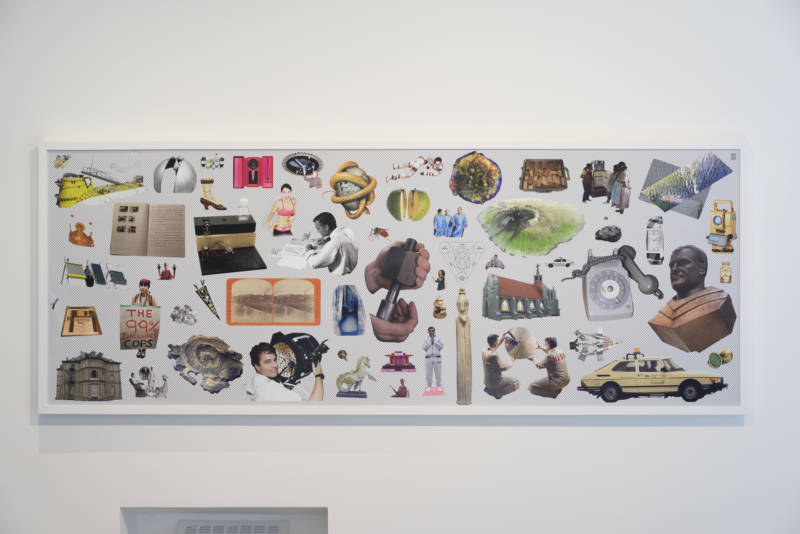Oysters and the internet. Tanja Geis and Christopher Nickel, the inaugural artists of Embark Gallery’s new R&D Projects series, chose vastly different tracks in their research-based partnerships with local nonprofits, the culminations of which are now on view in two concurrent solo exhibitions.
For Lurid Ecologies: Ways of Seeing the Bay, Oakland-based Geis speculates about a re-colonization of the San Francisco Bay by Ostrea lurida. A bit of background: Ostrea lurida, also known as the Olympia oyster, was a common food source in the Bay Area for thousands of years. Today, local populations are critically low. The culprits? Take your pick: over-harvesting, pollution, hydraulic mining runoff, and invasive species have all been blamed for wreaking havoc on the oyster, which filters nitrogen from water and creates important habitats for other aquatic life.
Geis’ imagined future may not be far off — several state and federal organizations are piloting Ostrea lurida restoration, which has the potential to contribute to sea level resiliency and pollution mitigation. In fact, Geis collaborated with one of these organizations, the Smithsonian Environmental Research Center (SERC), to produce the work in Lurid Ecologies.
On view are a series of large paintings of imagined Ostrea lurida colonies. Painted on paper with mud from the San Francisco Bay, these works create a referential loop: material taken from the Bay creates a vision of a more sustainable Bay. The intricate paintings act like aquatic Rorschach tests — many seem almost anthropomorphic, with faces emerging from the varied substrates. The complexity of the paintings evidences Geis’ commitment to both fine art and the welfare of the marine environment (she holds both an MFA and a graduate degree in coastal and marine management).

The centerpiece of the exhibition is Life in the Greenhouse, a three-channel video filmed in the research tanks at the Romberg Tiburon Center for Environmental Studies. The video’s connection to Ostrea lurida is less apparent, but unlike some of Geis’ other, more ethereal videos, this one is more straightforward, maybe even scientific.




